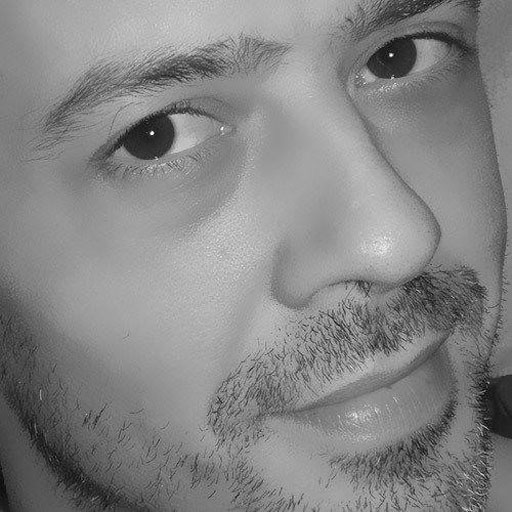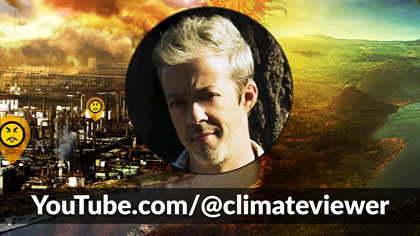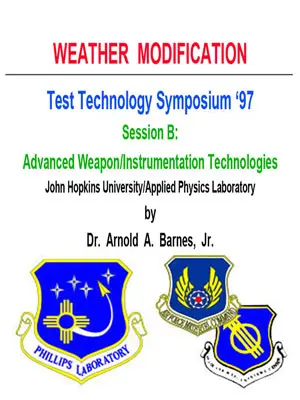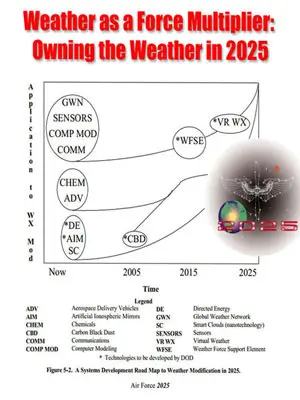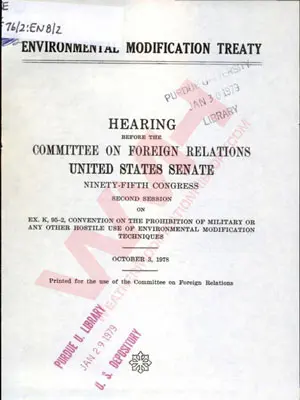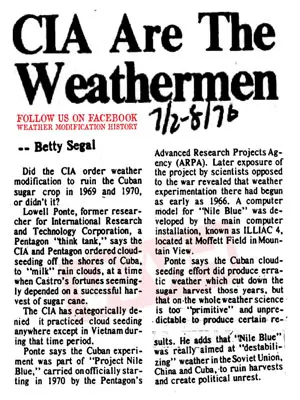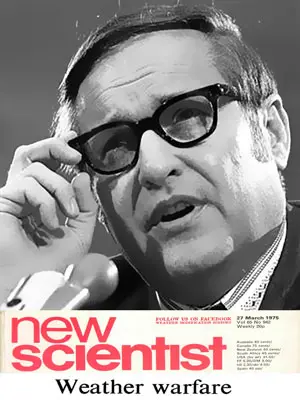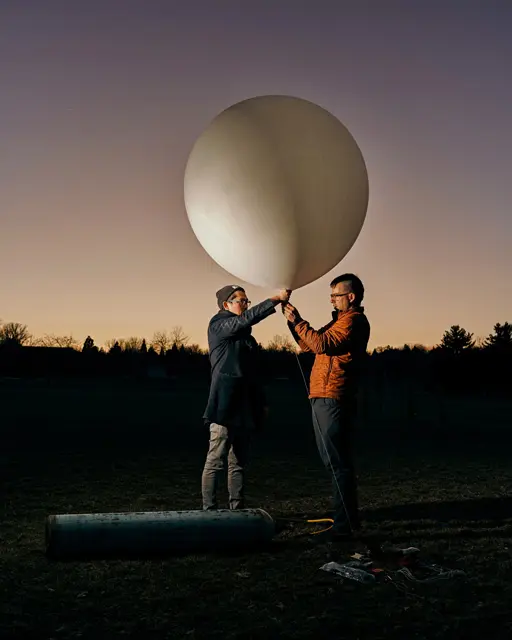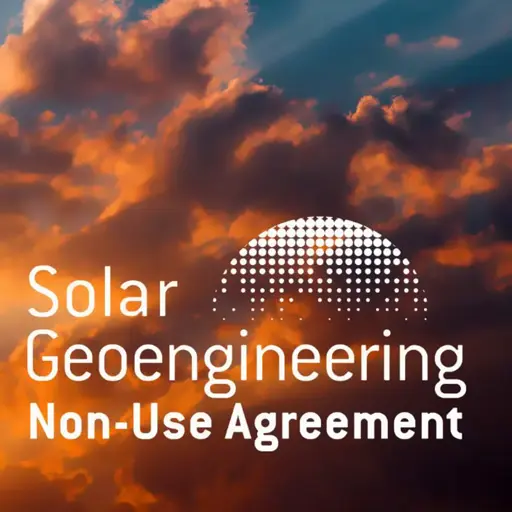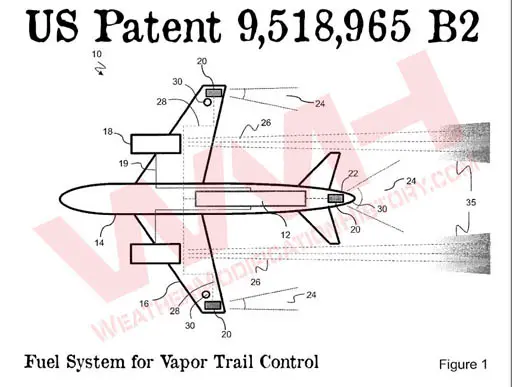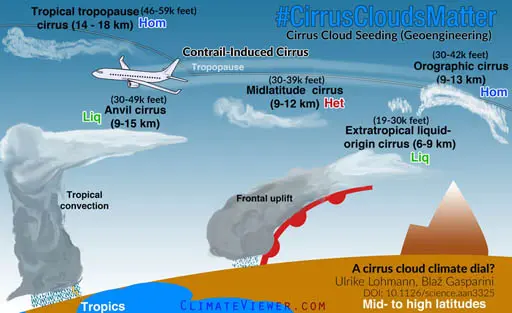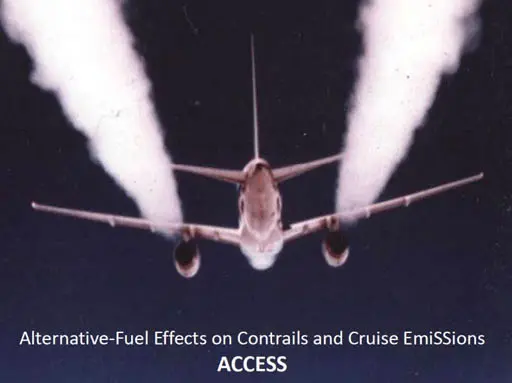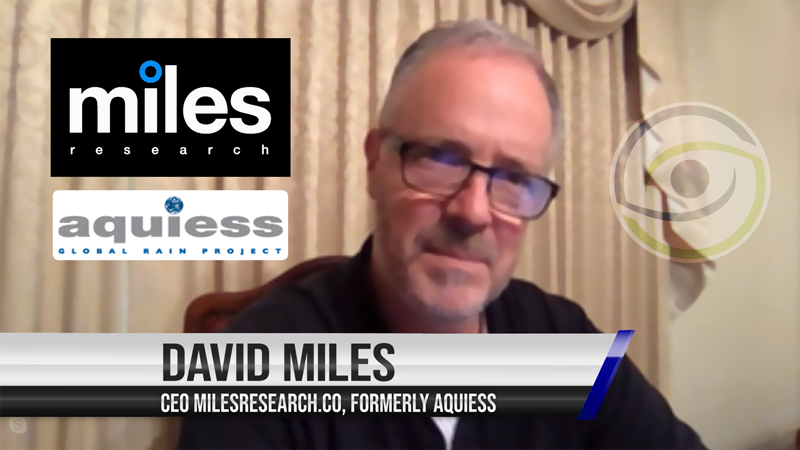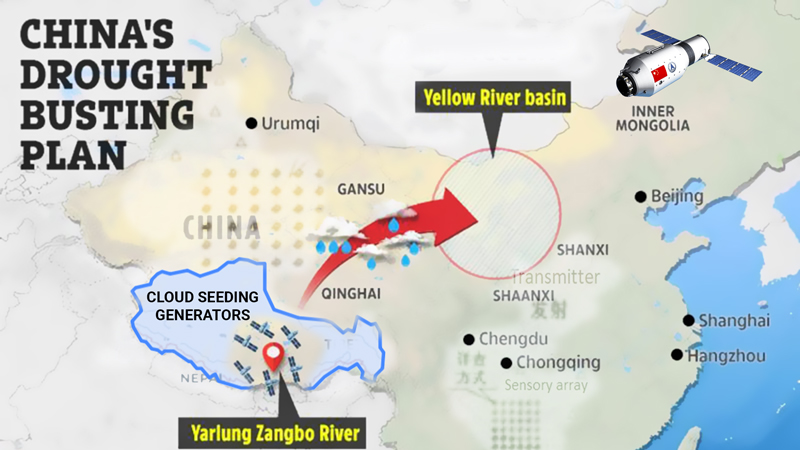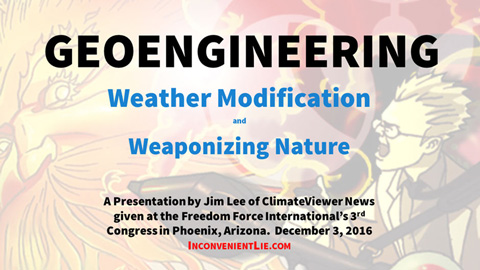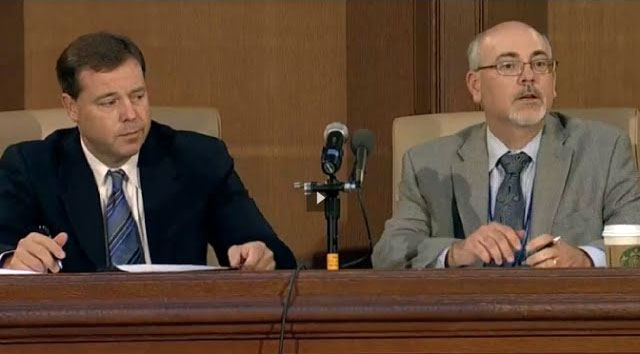
Please check out our solution: “The Environmental Modification Accountability Act of 2018” - A draft legislation to end atmospheric experimentation without prior notification.
The Environmental Modification Convention (ENMOD), formally the Convention on the Prohibition of Military or Any Other Hostile Use of Environmental Modification Techniques is an international treaty prohibiting the military or other hostile use of environmental modification techniques having widespread, long-lasting or severe effects. It opened for signature on 18 May 1977 in Geneva and entered into force on 5 October 1978.
The Convention bans weather warfare, which is the use of weather modification techniques for the purposes of inducing damage or destruction. The Convention on Biological Diversity of 2010 would also ban some forms of weather modification or geoengineering.
Many states do not regard this as a complete ban on the use of herbicides in warfare, such as Agent Orange, but it does require case-by-case consideration.
Brothers in Denial
Laird wasn't the only official whose 1972 weather modification testimony was untruthful.Benjamin Forman, a senior Department of Defense lawyer, reiterated Laird’s denial later that year: “We have not, as Secretary Laird has previously said, ever engaged in weather modification activities in Northern Vietnam.”
At the same hearing, the Deputy Director of the US Arms Control and Disarmament Agency had similar difficulties. Asked by Senator Pell if rainmaking projects had been approved by Laos and Thailand, Philip Farley replied: “I don’t wish even to admit, sir, that there were such projects.” (US Senate, Subcommittee on Oceans and International Environment; 26 July 1972; p. 34 and 45)
The Limits of Inside Pressure: The US Congress Role in ENMOD
The US Congress played an important role influencing US policy on ENMOD. In the early 1970s the Senate and House conducted hearings on the use of the environmental a weapon of war. While Agent Orange and other herbicides were visible, mostly public manifestations of systematic environmental alteration, the Congress was instrumental in uncovering Operation Popeye, the top secret US weather modification program in Southeast Asia. A strong stand by several legislators was important convincing the Ford administration to negotiate. Sadly, some of the Congressional instigators of ENMOD, such as Claiborne Pell, were also used by successive US administrations. Pell and other treaty supporters had to swallow their disappointment in the troika and ENMOD's other weaknesses - some of which were introduced by the US - as they convinced their colleagues to ratify.Operation Popeye first came to public light in March 1971, when reporter Jack Anderson published a story based on a secret 1967 memo from the Joint Chiefs of Staff to President Johnson. The memo read: “Laos operations - Continue as at present plus Pop Eye to reduce the trafficability [sic] along infiltration routes & Authorization requested to implement operational phase of weather modification process previously successful tested and evaluated in some area”. (US Senate, Subcommittee on Oceans and International Environment; 26 July 1972; p. 5).
Members of Congress pressed the Pentagon to unveil details of the weather modification program. Senator Claiborne Pell, chairman of the Senate Subcommittee on Oceans and International Environment, and later chairman of the Foreign Relations Committee, was the engine behind that effort, although there were others, both in the Senate and the House, who devoted energy to it.
Rainmaking operations were a source of concern not only because the impact of the operations themselves, but because they were seen as opening the door to a new and dangerous type of warfare. Severe rains and typhoons in North Vietnam in 1971 added to concern, a link to the U.S. cloud seeding operations was suspected. According to Pell:
Rainmaking as a weapon of war can only lead to the development of vastly more dangerous environmental techniques whose consequences may be unknown and may cause irreparable damage to our global environment. This is why the United States must move quickly to ban all environmental or geophysical modification techniques from the arsenals of war
(US Senate, Subcommittee on Oceans and International Environment; July 26, 1972; p. 4)
On 23 September 1971, Pell sent a letter to the Defense Department requesting information on Operation Popeye. After waiting 4 months to answer, the Defense Department declined to reply on the basis that it would threaten national security. (US Senate, Subcommittee on Oceans and International Environment; 26 July 1972; p. 4). Testifying to the Senate on 18 April 1972, Secretary of Defense Melvin Laird denied any weather modification in Northern Vietnam, saying “we have never engaged in that type of activity over Northern Vietnam.”
(Quoted in: US Senate, Subcommittee on Oceans and International Environment; March 20, 1974; p. 109.).
Skeptics were not appeased and held new hearings on July 26-27, 1972. Pell introduced a Resolution (281) “expressing the sense of the Senate that the US Government should seek the agreement of other governments to a proposed treaty prohibiting any use of an environmental or geophysical modification activity as a weapon of war, or the carrying out of any research or experimentation with respect thereto.” This resolution, with minor modifications, would be approved a year later as Resolution 71, on 11 July 1973. (Similar resolutions were introduced in the House of Representatives, H.R. 116 and 329 of 1974 and H.R. 28, 1975.)
In early 1974, the administration’s wall of silence began to crack. In a January 28 letter to senators, Melvin Laird (who had moved from Secretary of Defense to become a special advisor to President Nixon) admitted that weather modification had, in fact, been undertaken in Vietnam. Laird was admitting that his 1972 testimony was false; but claimed that he - as Secretary of Defense - didn’t know what was happening.
Laird’s secret letter admitting rainmaking was leaked by an unknown source and began circulating around Washington. On 24 March 1974, the whole rainmaking operation was finally disclosed to the Senate; but in a Top Secret hearing. Pell and other officials pressed for public release of the briefing and, on May 19, 1974, a transcript was released and a public account was at last made, over three years after Anderson’s story.
Operation Popeye (also known as Operation Intermediary or Operation Compatriot) was long running and large. It operated from 20 March 1967 until 5 July 1972. The objective was to extend the monsoon season over North Vietnamese and Viet Cong resupply routes, denying the use of trails and roads. From the presentation:
Chart 2. Objective (supplied by the Department of Defense). Increase rainfall sufficiently in carefully selected areas to deny the enemy the use of roads by:
(1) Softening road surfaces (2) Causing landslides along roadways (3) Washing out river crossings (4) Maintain saturated soil conditions beyond the normal time span.
(US Senate, Subcommittee on Oceans and International Environment; 20 March 1974; p. 89)
The initial operation area was over parts of Laos and North Vietnam. It was then extended and redrawn to include parts of South Vietnam and Cambodia. In total, the Pentagon admitted that US C-130 aircraft operating from Udorn Royal Thai Air Force Base flew 2,602 missions and expended 47,409 cloud seeding units. (US Senate, Subcommittee on Oceans and International Environment; 20 March 1974; pp. 101-105). The Pentagon said the project cost $21.6 million.
At the briefing, military officials tried to downplay the impact of Operation Popeye, arguing that the increase of rainfall had been marginal, ‘only’ affecting about around 5% of the precipitation in the region: “While this program had an effect on the primitive road conditions in these areas the results were certainly limited and unverifiable. It was conducted because of its apparent contribution to the interdiction mission and relatively low program costs.
Critics wondered why a purportedly ineffective program would have continued for over 5 years. Despite Pentagon denials, many critics also believed that Operation Popeye was a possible contributor to the catastrophic 1971 floods in North Vietnam, which covered over 10% of the country. And the price tag, the equivalent of US $100 million in 2000 dollars, did not seem like such a bargain.
Administration officials said that they resisted disclosing Popeye because of delicate relationships with governments in the region. Thailand, from which the flights were operated, was unaware that it was hosting the operation. Only Laos had been informed of the operations, according to the Pentagon. (US Senate, Subcommittee on Oceans and International Environment; 20 March 1974; p. 115).
Oh, it's Agent Orange (and Others) Again
When the Pentagon disclosed Operation Popeye, Senator Pell also raised the issue of herbicides (Agent Orange, etc.). Dennis Doolin and General Furlong, both Deputy Assistant Secretaries of Defense, together asserted that the extensive spraying of herbicides had not caused lasting damage. They based their position on a study conducted by the National Academy Sciences.Pressing further, Pell queried about forest clearing with “Rome Plow” tractors and about alleged airdrops of an emulsifier to create mud on trails in Laos. The officials denied that Rome Plow damage was extensive and, interestingly, suggested the emulsifier story was true; but that it was an impractical experiment. According to the Assistant Secretaries the Defense Department was not involved, and that another, unnamed, US government agency may conducted emulsifier experiments. (US Senate, Subcommittee on Oceans and International Environment; 20 March 1974; p. 122. The unnamed agency was, presumably, the CIA.)
Pentagon Resists Giving Up Environmental Modification
While elected officials in Congress were pressing an international agreement on hostile environmental modification, the armed forces resisted renouncing this kind of weapon.
Standing supporters of environmental warfare were to be found in the US armed forces. Prominent among them was Admiral Pier Saint-Amand of the Naval Ordinance Laboratory in China Lake, California (which conducted the research on cloud seeding to enable Operation Popeye). In 1969, while Popeye was still Top Secret, Saint-Amand testified that he endorsed weather manipulation as a weapon. The Admiral saw giving the US Navy and other forces a diverse capability to modify the environment as a mission for his Laboratory:
"Primarily the work is aimed at giving the US Navy and the other armed forces, if they should care to use it, the capability of modifying the environment, to their own advantage, or to the disadvantage of an enemy. We regard the weather as a weapon. Anything one can use his way is a weapon and the weather is as good a one as any."Five years later at a January 1974 hearing, Saint-Amand remained unprepared to give up. The Admiral reaffirmed his conviction that environmental warfare should be developed and available to the US, because “The potential exits that over the years, the application of geophysics to warfare could become a very important tool.” (US Senate, Subcommittee on Oceans and International Environment; 25 January 1974, p. 47)(Quoted in: US Senate, Subcommittee on Oceans and International Environment; 26 July 1972; p. 22, emphasis added).
Saint-Amand and colleages in the Pentagon found no moral inadequacies in environmental warfare. Rainmaking, they suggested, is more humane than bombing. Moreover, they said, even if weather modification is used to increase the effectiveness of bombing by clearing the target area, it is not a problem because bombing is not prohibited.
Administration Decision-making
Public awareness and Senate Resolution 71 put pressure on the Nixon administration to do something about environmental warfare. Its decision-making process was detailed in 1978 in a government-prepared Environmental Assessment of the Convention. In response to Senate Resolution 71, in April 1974 President Nixon asked the National Security Council (NSC) to study possible international legal restraints to environmental warfare. For the study, the NSC Under Secretaries' Committee was joined by representatives from the Department of Commerce and the Arms Control and Disarmament Agency.A month later, a report outlining three options was submitted to the president:
Option 1: no restraints; Option 2: restraints on military use of environmental modification having long-term, widespread or especially severe effects; Option 3: a comprehensive prohibition of hostile environmental warfare.
On 3 July 1974, a superpower summit in Moscow issued a joint communiqué on environmental warfare that, among other things, recognized that the use of environmental modification techniques “could have widespread, long-lasting, and severe effects harmful to human welfare.”
In early August, Richard Nixon resigned, possibly without coming to a final decision on NSC’s options. In October, President Ford opted for #2, deciding that it was in the US interest to begin discussions with the Soviet Union on restraints on the use of environmental modification techniques for military purposes, but that any restraints be subject to certain thresholds.
The Soviets were a step ahead and, in December 1974, submitted a resolution at the UN General Assembly with a draft treaty to ban all hostile environmental modification, as well as research and development. The resolution was approved at the General Assembly with no opposition. The US was one of only five countries that abstained
Bilateral negotiations between the US and the Soviet Union were held from December 1974 until August 1975, culminating with the tabling of identical texts [PDF] at the CCD.
At the time, Congress was unaware of the Administration’s rejection of a total ban on environmental modification and that the US was the driving force behind the troika. Testifying in 1978, the Carter administration reluctantly admitted the truth about the 1974-75 US watering down of the Soviet text in the bilateral superpower talks:
Senator Percy: The phrase "widespread, long-lasting or severe" seems somewhat ambiguous and possibly unclear. It is clear that the Soviet Union was prepared to sign a treaty banning all such techniques? If so, why did the Joint Chiefs of Staff insist that this standard be adopted?In retrospect, Congress might have seen it coming and, perhaps, some did. One 1974 hint was given by Admiral Saint-Amand, who explained the distinction he drew between “tactical” and “strategic” use of weather modification. Tactical uses of weather modification would allow troops to benefit from the weather, or make life harder for enemy formations and resupply. Strategic uses, those aimed at severely disrupting a country’s economy and life, might be less practical with 1970s technology. Saint-Amand was not in favor of limits on either; but, was a particularly ethusiastic supporter of the tactical weather modification. For Saint-Amand, even the massive Operation Popeye fell into the “tactical” category, because the purpose, size, and effects of individual operations was limited. (US Senate, Subcommittee on Oceans and International Environment; 25 January 1974; p. 42)Admiral Welch [Joint Chiefs of Staff]: “I think the Joint Chiefs of Staff prefer to have this threshold treaty with these stipulations in it rather than a complete foreclosure of military options.”
Davies [Arms Control and Disarmament Agency]: “In the negotiations it is true that it was the United States that proposed this particular terminology.”
(US Senate, Committee on Foreign Relations; 3 October 1978, p. 31)
Echoes of the troika can also be found in the distinction made by the US between “climate modification” and “weather modification.” The US thought that different degrees of duration and magnitude of effects allowed the creation of two categories. State Department representative Herman Pollack told the Congress at a 1972 hearing that “the administration would not use techniques for climate modification for hostile purposes even should they become available”, but, when asked if the renunciation extended to weather modification, Pollack promptly said no. Asked to explain the distinction, Pollack stated:
[Pollack:] ... climate modification is generally conceived of to be widespread, not involving limited areas but areas occupied by one, two, three, or numerous nations. Weather modification is transitory, temporary, and limited in its geographic impact.At the same session, Pell pressed:
Senator Pell: You would not be willing to make the statement that the administration would eschew techniques for weather modification for hostile purposes?Mr. Pollack: No; this statement, sir, is directed toward climate modification.
(US Senate, Subcommittee on Oceans and International Environment; 26 July 1972, pp. 20-22)
Future Technology
The perception prevalent among the executive branch and armed forces leaders in Washington was that the type of technologies that ENMOD should prohibit were yet to be developed. ENMOD was a futuristic treaty, preventing catastrophes resulting from technology as yet unavailable. A corollary to that belief was the administration's claim that US weather modification activities in Vietnam would not amount to a violation of ENMOD.Many officials thought that the technology required to carry out the type of activities that would reach the threshold, and therefore would be banned by the convention, had not yet being developed. For instance, the State Department’s Thomas Pickering told Congress:
At the time when the world is becoming more and more concerned about protecting and preserving our environment, it is a significant step to have negotiated this convention which is aimed at prohibiting the manipulation of the environment as a weapon. While the intentional modification of the environment can be done only on a local and small scale at best, we scarcely need to remind ourselves that in our era technology can advance to make possible actions which would cause hitherto inconceivable environmental consequences.So we believe it wise to outlaw what is commonly called environmental warfare, before it has a real chance to be developed significantly for military purposes, with potential disastrous consequences.
(US Senate, Committee on Foreign Relations; 3 October 1978, p. 24)
Would Popeye be Permitted?
Congress was concerned that, by virtue of the troika, activites such Operation Popeye would not prohibed by ENMOD. Congressman Gude raised the issue with Fred Ikle, Director of the Arms Control and Disarmament Agency. The response was perturbing. According to Ikle:The United States precipitation modification efforts in Southeast Asia during the 1960s apparently did not achieve the damaging effects on the enemy that are the inherent objective of military operations, thus demonstrating the present substantial inadequacies in the technology of precipitation modification. However, it is my view that if future progress should make this technology effective so that its use had widespread, long-lasting or severe effects, its use would be prohibited. If drought were the objective, the same would be true.The fact that the operation had been carried out for over five years and over an area that comprised several countries, did not seem to bother Mr. Ikle, who suggested ’troika plus one’ by adding “effectiveness” as an additional condition environmental modification attempts had to meet in order to violate the Convention.(Letter to Congressman Gude, 24 September 1975 in: US Senate, Subcommittee on Oceans and International Environment; 21 January 1976, pp. 5-6)
Senator Pell asked the Assistant Director Davies of the US Arms Control and Disarmament Agency, who had led the US delegation during the negotiations with the Soviets:
Senator Pell: The paragraph suggests to me, and it should to you, that anything that is effective militarily would be prohibited by the criteria of 'widespread, long lasting or severe'... Only those activities which while hostile, are ineffective, would be permitted... If that is so, why not eliminate those criteria because I don't really understand why it is necessary to preserve an ineffective option?A pestered Davies later conceded that, since Operation Popeye went on for a period of years, that it exceeded the long-lasting criteria of the troika (p. 13).Mr. Davies: Mr. Chairman, this question has been asked many times before. The reasoning is particularly difficult because it always starts with a recounting of past actions which obviously cannot be prohibited. I think that if dealing with the past, we must also note that had anyone known that it would not have been effective, it would never have been proposed.
(US Senate, Subcommittee on Oceans and International Environment; 21 January 1976, p. 11-12)
Whether Popeye had reached the threshold was also addressed in an Environmental Assessment of ENMOD that the administration was compelled to undertake by a lawsuit brought by environmental organizations that opposed ratification (because they felt it was too weak). US officials clung to the notion the claims of ineffectiveness absolved them of having conducted an operation that would have violated the treaty had it been in force:
Popeye is apparently the only example of an attempted use of weather modification for military or other hostile purposes, and Popeye suggests that it would be impossible to predict the environmental effects of the use of such techniques elsewhere. As has been demonstrated in numerous weather modification projects carried out in this country, the effects are usually small and are difficult to quantify. In any event, if future advances in the technology of precipitation modification should make this technology so effective as to cause widespread, long-lasting or severe effects in a military useful way, its use would be prohibited. (In: US Senate, Committee on Foreign Relations; 3 October 1978, p. 94)
Keeping an eye on the Geneva negotiations
During negotiations, Congress pressed the Administration to change its positions, particularly the shortcomings of the troika, the treaty's failure to prohibit research and development, the limitation of benefits to parties, and the Security Council's role in the complaints procedure. The Administration replied by promising to take action; but it never did it.These efforts continued even after UN negotiations concluded and the treaty was open for signature. Backed by environmental organizations who opposed the treaty because of its shortcomings, the Senate stalled US ratification of the Convention.
The Senate’s first attempt to force the administration to modify its position was in January 1976, before the core negotiating season at the CCD (Feb-Sep). Senator Pell opened a hearing with an improvements list:
In particular, the subcommittee would like to know whether the treaty might be strengthened by deleting the language limiting the prohibition against environmental warfare to those instances in which the effects are 'widespread, long-lasting, or severe', by expanding the prohibition to include some verifiable forms of military research and development; by perhaps deleting the requirement that complaints must be lodged with the Security Council where a veto could block action, and by deleting the language which restricts the benefits of the prohibition to those nations which are parties to the convention.(US Senate, Subcommittee on Oceans and International Environment; 21 January 1976, pp. 1-2)
Frankly, We are Stuck with this Draft.
Senator Pell conveyed his reservations to officials responsible for US diplomacy. In a January 1976 letter to Fred Ikle, Director of ACDA, Pell warned that ratification might not happen if the treaty permitted some kinds of environmental warfare. As usual, the administration promised to reconsider; but no measurable policy change resulted.As Pell had warned, the Senate was reluctant to authorize ratification, forcing the US President and the Secretary of State to commit to reviewing the US troika stance “no more than six months after ratification “, and to say that the United States “will be prepared to re-examine this limitation on the scope of the Convention at the review conference or possibly before and that the United States earnestly desires that all research and development as well as use of environmental modification techniques be dedicated solely to peaceful ends .
But to effect any changes to the Convention, the United States needed to be a party. To be a party, the Administration needed the Senate’s authorization.
After ENMOD entered into force (October 1978) and pre-ratification changes became out of the question, the Senate finally gave in. The date for the First Review Conference had been scheduled for September 1982. At the Review Conference, in its opening statement, the US delegation declared that changes in the scope of the prohibition contained in article I were unnecessary, as was the creation of a system to regulate research and development.
The efforts of the Congress and the environmental groups to have a treaty with a more comprehensive ban did not pay off. But not everything was lost. Congress and civil society did succeed in forcing the declassification of Operation Popeye, and in convincing the US to negotiate a ban on environmental warfare. Faced with Pentagon and administration opposition, Pell summed up the situation in a 1976 moment of candor:
Professor Weiss: There is no reason for the presence of the three adjectives, 'widespread, long-lasting or severe'. Thus, my own recommendation would be to delete those words from the draft.Senator Pell: It would be my recommendation too. But my recommendations are not being accepted. Frankly, we are stuck with this draft. We are lucky to have gone this far .
(US Senate, Subcommittee on Oceans and International Environment; 21 January 1976, p. 25)
Stockholm Wins a Congressman
1972 was a important year in the evolution of environmental law and consciousness. The landmark UN Conference on the Human Environment (Stockholm, June 1972) had an observable effect on the US Congress. Gilbert Gude, a Congressman from Maryland, was an observer on the US delegation. Gude was invited to the Senate to testify in July, 1972, a few weeks after returning from the Stockholm conference. Gude testified:Why should we be so alarmed about a technique that it is not nearly as lethal as other forms of warfare? There are several reasons. First, there are distinct command and control problems associated with geophysical warfare and weather modification in particular. We simply do not have the effective short or long term control over the climates of the world. We can create disturbances, but as civilian experiments have shown, control is not very precise. In a military environment, control over the results of weather experimentation is even more uncertain.
The command problem is not less acute. Since the technology do date does not involve great expense or sophisticated equipment, it is not difficult to imagine the use of weather modification by many different military subunits. In fact, there have been reports that we have trained the South Vietnamese to use weather modification. There are no double-key safing mechanism here, no exclusive possession as with nuclear weapons.
We must also consider that the use of weather modification is potentially indiscriminate. Unlike other weapons, the winds and seas are not so directable that we can discriminate between one target and another. By their nature, they are areawide weapons. We cannot flood only military targets or cause droughts in areas producing only military rations. The technology will be used against people regardless of their uniform or occupation. Weather modification will inevitably strike civilians harder than nearby military objectives. Will rain along the Ho Chi Minh Trail succeed where years of bombing has not?
And what will it exact from agrarian societies along its path, both friend and foe?
The issues of command and control, and the discrimination highlight another disturbing characteristic of weather modification, the difficulty of detection. Unlike other weapons, it may be possible to initiate military weather modification projects without being detected. In other words, the military results may not be visibly tied to the initiating party. This raises the possibility of clandestine use of geophysical warfare where a country does not know if it has been attacked. The uncertainty of this situation, the fear of not knowing how another country might be altering your climate is highly destabilizing.
I can also envision other possibility. Suppose, for example, that a US plane flies a routine, non military mission near Chile, Egypt, or Tanzania and by some quirk of fate a major earthquake, flood, or forest fire occurs in one of these countries. Because we have been tinkering with geophysical warfare, we could be charged with creating that environmental calamity due to the mere proximity of the U.S. aircraft. Propaganda would echo around the world. There is ample precedent to believe that this would happen. We need only to remember the incident during the Korean war when the North Koreans unjustly claimed that we were using poison gas.
(US Senate, Subcommittee on Oceans and International Environment; 27 July 1972; pp. 57-58)
A Seeding Unit
The seeding units consist of a 40mm aluminum photoflash-type cartridge and a candle assembly. The candle assembly included a plastic container 3 inches long with the seeding material and necessary delayed firing mechanism to ignite the free falling container. The silver iodide or lead iodide is produced as the chemical mixture burns.(US Senate, Subcommittee on Oceans and International Environment; 20 March 1974; p. 91).


